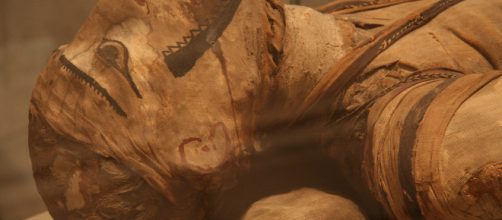People raised on decades of mummy movies want to believe that every mummy carries a curse. One mummy in particular has been upheld as an example of Egyptian sorcery. Science has now weighed in, and the archaeologists believe that there is a more mundane explanation for the "screaming mummy." In short, a new examination of the corpse has concluded that its terrifying yelp was the result of two divergent desires -- one wishing to preserve the body and one wishing to punish it.
Dr. Bob Brier, a Long Island University archaeologist, has put forward this theory after testing the mummy's corpse.
Dr. Brier also noted that the mummy, which is currently on display in the Egyptian Museum in Cairo, was wrapped in sheepskin. Such an act is a sign that the individual in question did something out-of-bounds while he still breathed. "For some reason, there was an attempt to make sure that he didn't have an afterlife, and in another attempt, somebody cared about him and tried to override that."
These dueling emotions have led many to suspect that the "screaming mummy" was involved in some sort of court intrigue or dynastic dispute. One conspiracy theory argues that the howling mummy is a certain Prince Pentawere, one of the scions of Pharaoh Ramses Iii. So far, the true identity of the mummy has yet to be revealed.
For all intents and purposes, the mummy's name is "Unknown Man E."
Unclean
After death, Unknown Man E had his nails trimmed and his toenails dyed with henna. The corpse was also wrapped in sheepskin, an ancient sign that the corpse in question was considered "unclean" by his contemporaries. Dr. Zahi Hawass, the most famous archaeologist in Egypt, told Al-Ahram Weekly that the mummy's strange burial and his contorted face are clear indications that "he did something bad in his life." Despite this, the mummy received a royal burial and was interned in the royal burial ground located at Deir Al-Bahari.
In an interesting twist, a DNA test conducted by the Egyptian Mummy Project revealed that "Unknown Man E" was related to Ramses III.
Similarly, the contusions around the mummy's neck correspond with the so-called "Harem Conspiracy Papyrus," which recorded that Prince Pentawere was hanged for his crimes against the royal house. In life, Prince Pentawere was in league with his mother Tiye, as well as several government officials and army officers. They simply sought to remove Ramses III from office by assassinating him. However, the plot was uncovered before the political killing could be carried out.
A weak pharaoh
Ramses III ruled the Kingdom of Egypt from 1186 until 1155 BC. A member of the 20th Dynasty, Ramses III ruled an Egypt that was in the dying days of the New Kingdom. During his reign, Egypt's power dwarfed considerably as internal disputes racked the empire.
For most of Ramses III's rule, the Indo-European pirates known as the Sea Peoples constantly raided and attacked the kingdoms and city-states of the eastern Mediterranean. While Egypt's superior military always defeated the Sea Peoples in battle, the pillaging and migrations conducted by the little-known pirates led to what historians have called the "Bronze Age collapse."
While the New Kingdom of Egypt oversaw the biggest expansion of Egyptian territory in history, thus creating what can be called an empire based in the capital city of Thebes, the wars against the Sea Peoples helped to drain the Egyptian economy, thus making it vulnerable to foreign invasion. Following the end of the New Kingdom, Assyrian, Nubian, and Macedonian armies swept across the region and subordinated the Egyptians.


